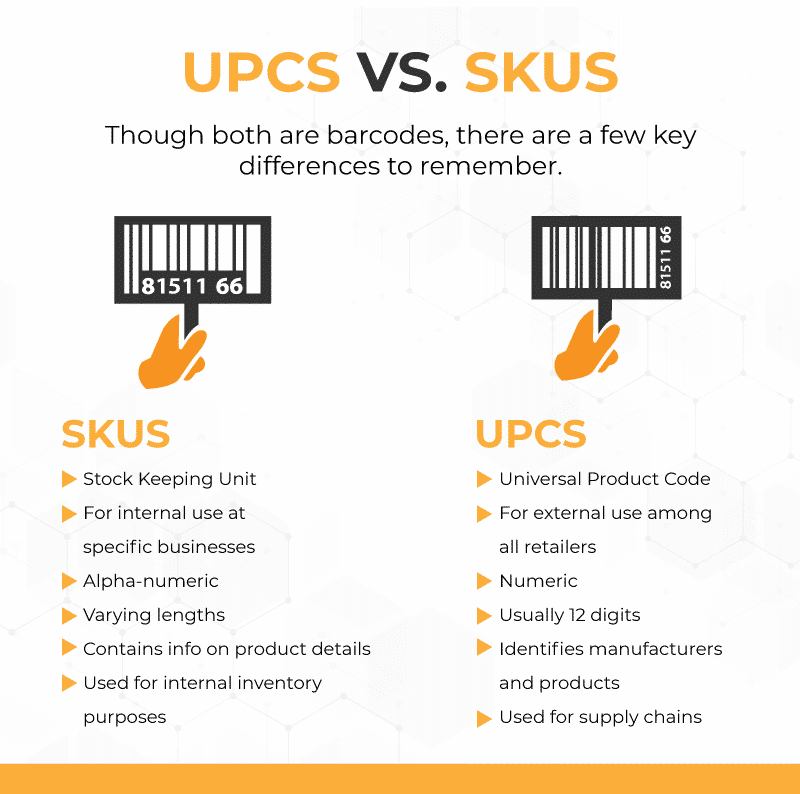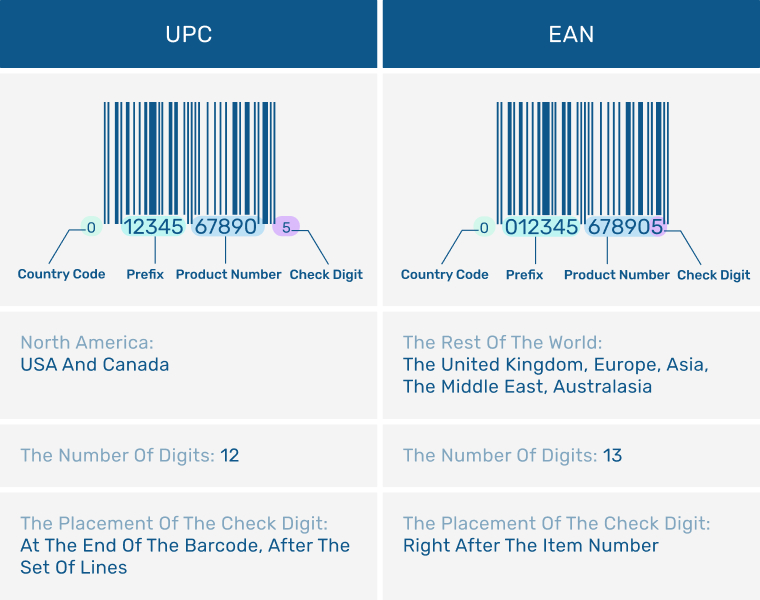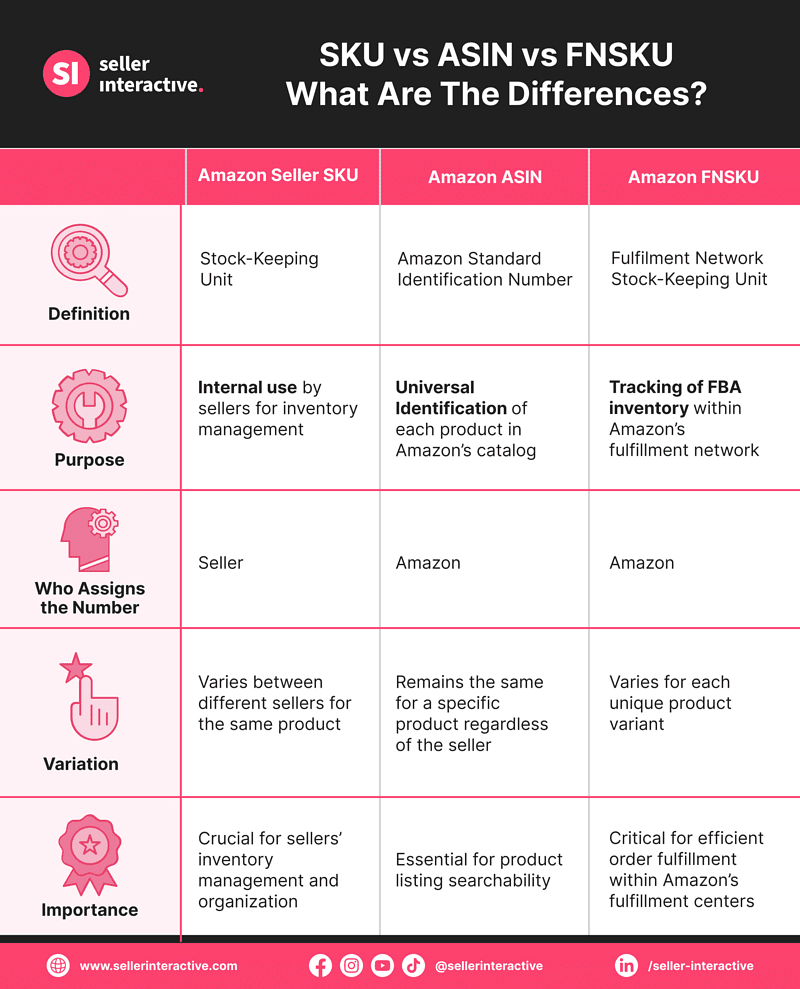Amazing Info About What Is The Difference Between SKU And Asin

SKU vs. ASIN
Ever wondered what those cryptic codes are when you're browsing your favorite online stores? Two common ones you'll stumble upon are SKU and ASIN. They both identify products, but they're not interchangeable. Think of it like this: they're both IDs, but one is your personal nickname, and the other is your official government ID. Let's untangle this a bit, shall we?
1. What Exactly is a SKU?
SKU stands for Stock Keeping Unit. It's basically your internal product code. Retailers and businesses use SKUs to track their inventory. It's unique to them. This means if you sell the same widget as another store, your SKU for it will be different. It's like your own secret language for your products. You get to decide what it looks like — it can be numbers, letters, or a combination of both. Maybe it indicates color, size, style, or even the warehouse location. SKUs are designed to make inventory management smoother and more efficient. So, next time you see a random string of characters on a product label in a store, that's probably the SKU whispering its secrets.
Imagine you have a clothing store. You might have a SKU like "TSHIRT-BLUE-S" for a blue t-shirt, size small. Your competitor down the street, selling the exact same shirt, will have a completely different SKU, tailored to their system. SKUs help you avoid the headache of accidentally shipping the wrong size or color to a customer. They are crucial for making sure you can easily locate and manage your items, helping you avoid the dreaded 'out of stock' notification when a customer is ready to buy.
Another way to think of SKUs is that they're like internal organizational tools. You're the architect of your SKU system, designing it to fit your business needs perfectly. Want to track vendor information within the SKU? Go for it! Want to use it to denote the season the product was introduced? That's your prerogative! The flexibility of SKUs is one of their biggest advantages. Just remember, keep it consistent and clear within your own business.
Essentially, SKUs are all about keeping you organized. They are a fundamental element in efficient warehouse management. Without SKUs, businesses would be drowning in a sea of undifferentiated products, leading to mis-shipments, inaccurate inventory counts, and a whole lot of unhappy customers.
2. And What About an ASIN?
ASIN stands for Amazon Standard Identification Number. Now, this is a different beast altogether. ASINs are unique identifiers assigned by Amazon to products listed on their platform. Think of it like a social security number for products within the Amazon ecosystem. It's how Amazon keeps track of millions of products sold on its marketplace. If you're selling on Amazon, you'll become very familiar with ASINs. The beauty of ASINs is that everyone selling the same product on Amazon uses the same ASIN. This helps Amazon streamline product listings and ensure that multiple sellers aren't creating duplicate pages for the same item.
Let's say you're selling a specific model of headphones on Amazon. Amazon will assign a unique ASIN to that model. Whether you're a small-time seller or a major retailer, you'll use that same ASIN when listing those headphones. This consolidation makes it easier for customers to compare prices from different sellers offering the same product and keeps the Amazon catalog organized.
ASINs are typically 10 characters long and are a combination of letters and numbers. They're prominently displayed on Amazon product pages, usually in the product details section. You can also find the ASIN in the URL of the product page. The ASIN helps customers instantly identify the precise product they're looking for. This consistency is crucial to the Amazon shopping experience.
Unlike SKUs, you don't get to choose the ASIN. Amazon decides. This standardized approach, while not customizable, fosters consistency and helps customers quickly identify the specific product that they are looking for. This consistency and standardized approach is a huge asset for both the shoppers and Amazon alike. So, when it comes to selling on Amazon, keep an eye out for those ASINs because they are an integral part of selling on the platform.

SKU Vs Barcode Understanding The Key Differences
Key Differences in a Nutshell
Okay, let's boil it down. The main difference is control and scope. You control your SKUs; Amazon controls ASINs. SKUs are internal; ASINs are specific to Amazon. SKUs are your personal organizational tool; ASINs are Amazon's organizational tool. Think of it like this: you create your SKUs to manage your inventory effectively, but you use the ASIN to properly identify your products on Amazon's bustling marketplace.
3. Scope of Use
SKUs are primarily used within a single business or organization to track its inventory. They are not standardized across different companies. This means that a product sold by multiple retailers will have a different SKU at each store. SKUs also allow a business to use their own system for tracking what items are what.
ASINs are specific to Amazon and are used to identify products on the Amazon marketplace. They are unique to each product and are used by all sellers of that product on Amazon. This consistency is a key feature of Amazon's product catalog and aids in organizing the vast number of items available on the platform.
To further clarify, a manufacturer might have their own part number for a product, a retailer their SKU, and Amazon their ASIN — all referring to the same product but used in different contexts.
Therefore, it is important to use each code correctly. For instance, a retailer would never use the ASIN in their own internal reports, as they do not have access to that system. Similarly, Amazon would not be able to help a supplier find an item just by having a SKU. This can cause confusion when asking for support, if you don't provide the proper code.
4. Control and Customization
Businesses have complete control over their SKU system. They can customize the format and content of SKUs to suit their specific needs. It is highly recommended to standardize your internal SKU system, to help prevent human error. A good inventory tracking system should be easy to understand and train employees on. You should use a system that is built to best fit the company.
Amazon assigns ASINs, so sellers have no control over them. This standardization ensures that all sellers of the same product use the same identifier, but it limits the flexibility of sellers to customize product identifiers.
It is important to take into consideration which code system is important to you. When talking to suppliers, you should ask them for their SKUs, so you can easily find it internally. Similarly, when dealing with Amazon, make sure you have a list of the ASINs that you sell. You may not need both, but it is important to ask which code is required depending on the situation.
Therefore, when you start a business, it is important to consider what SKU style you would like to adopt. However, when listing on Amazon, you will be provided with an ASIN and you have no control over it. It's all about using the right tool for the right job!
(1)_ZL8lvKcaIV.png)
What Is A SKU Number How To Use Codes Boost Business Virto
Putting It All Together
Let's solidify this with a few practical examples. Imagine you run an online bookstore. You sell a copy of "Pride and Prejudice." Your SKU might be "P&P-ENG-PB" (Pride & Prejudice, English, Paperback). Amazon, on the other hand, would assign a completely different ASIN to that book, something like "B00006IBT4." Now, let's say you also sell a limited edition signed copy of the same book. You'd give it a different SKU (maybe "P&P-ENG-HC-SIGNED") because it's a different product in your eyes. However, if that limited edition also exists on Amazon, it will have its own ASIN, separate from the regular paperback.
5. Example Cases
Another example would be a local coffee shop. You sell cups of coffee that you brew yourself. If you would like to keep track of this item in your inventory, it would require a SKU. Perhaps, something like "HOT-COFFEE-12OZ", which may mean it is a hot coffee that is 12oz. However, if you would like to sell Keurig K-Cups, you would need to create a SKU to track inventory, and obtain an ASIN to list it on Amazon. This means you would have to use both for the same product.
These examples also highlight the point that a company does not need to sell online to utilize a SKU, but ASINs are exclusive to the Amazon platform. This again demonstrates how SKUs are internal systems, while ASINs are an external system. You can track your inventory for your own purposes, or you can decide to list your products online and utilize Amazon for sales, requiring the use of ASINs.
You can also think of it this way, ASINs are important for comparing apples to apples, while SKUs are important for tracking your own apples. An item sold at one store may have a certain price, while another store may have a different price for the same item. The ASIN helps a customer to determine what product they are purchasing, and then they can begin comparing the prices of the two similar items.

What Is Upc And Asin Mean At Jamie Gibb Blog
Frequently Asked Questions (FAQs)
6. Q
A: Nope! They are entirely separate. SKUs are for your internal use; ASINs are for Amazon's use. Amazon won't recognize your SKU.
7. Q
A: You can usually find it in the product details section of the Amazon product page, or in the URL of the page.
8. Q
A: If you're listing a new product on Amazon that doesn't already exist, you'll need to create a new product listing, and Amazon will assign an ASIN to it.
9. Q
A: Nearly all products sold on Amazon have an ASIN. Even variations of a single product (like different colors or sizes) often have distinct ASINs.

